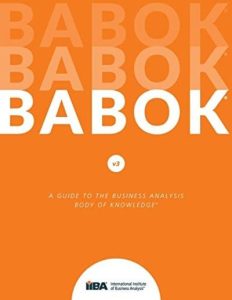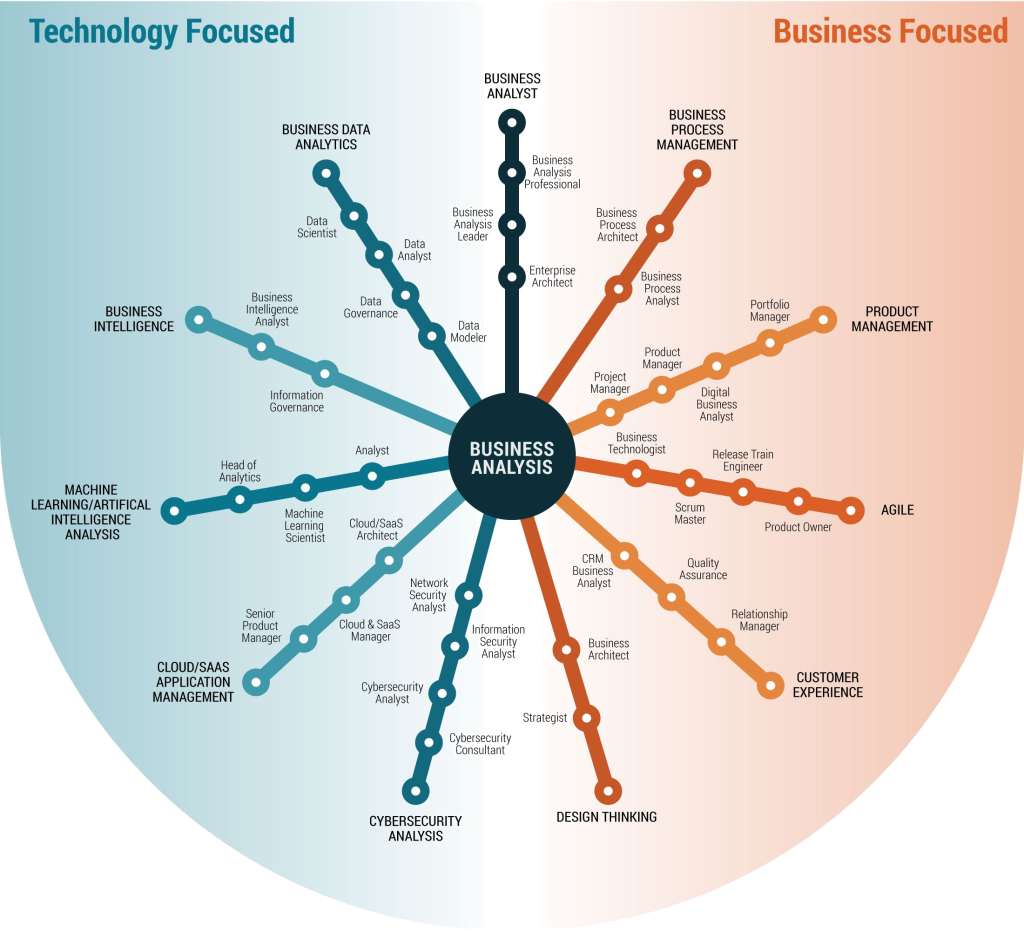Business Analysis Program – BAN2
Introduction
Video: Business Analysis Coordinator – Megan Gibson by Fanshawe OER Design Studio [3:44] is licensed under the Standard YouTube License.Transcript and closed captions available on YouTube.
A Business Analyst drives change within organizations through highly-developed communication skills; they maintain a vibrant and dynamic skill set in today’s fast-paced world. This one-year post-grad program provides you with the opportunity to practice as a business analyst and learn how to lead and drive complex changes by identifying the real problem, engaging with subject matter experts, defining requirements and solutions that deliver value to stakeholders to meet the strategic, tactical, and financial goals of an organization.

Unique Program Experiences

Our program offers unique applied research experiences, including one where students dive into a business locally, identify a potential need and develop a business case. As the culmination of all prior courses, small groups examine all available data to determine relevant requirements and produce their hypothesis.
The end result is a portfolio piece in the form of a business case, which successfully addresses challenges and proposes workable solutions.
Throughout our program, you will enjoy peer-led tasks that allow for highly engaging activities and applied learning opportunities to be embraced further during your subsequent co-op work experience. Some students even secure full-time employment before graduation as a result!
Toolkit

Students work with various tools, gathering data from internal and external sources and systems. You will even follow a BA through the entire project lifecycle of a major technology implementation.
Our program follows the Business Analysis Body of Knowledge, authored and published by the International Institute of Business Analysis (IIBA), which provides the conceptual framework for business analysis, the Business Analysis Core Concept Model (BACCM). Approximately 40 different research and business analysis techniques are taught in connection with these concepts.
In addition to Tableau Essentials training included within the Business Intelligence curriculum, a wide variety of software is used with research techniques such as environmental scanning, user story mapping, benchmarking, and organizational modelling, among others.
Student Experience
Do you crave the opportunity to be a part of something great? Would you like to make a difference in an organization and address challenges from all angles? Business analysts drive change within organizations and maintain a vibrant and dynamic skill set in today’s fast-paced world.
Alongside other budding business analysts, you will learn how to lead and drive complex changes by identifying the real problem, engaging with subject matter experts, and defining requirements and solutions that deliver value to stakeholders to meet the strategic, tactical, and financial goals of an organization.
Industry Certifications and Experience
Fanshawe College is an Endorsed Education Provider (EEP) of the Business Analysis Program, per the International Institute of Business Analysts (IIBA). As such, graduates pre-qualify for over 400 hours for the professional development component of various certification tests.
Certificates that graduates may pursue through the IIBA include:’
- Entry Certificate in Business Analysis (ECBA)™
- Certification of Capability in Business Analysis (CCBA)®
- Certified Business Analysis Professional (CBAP)®
Also available: Six Sigma Green Belt® certification
Your Future Career
Regardless of the industry, the demand for Business Analysis skills continues to grow. Whether you pursue a career in consulting, project management, data analytics, system design, or process improvement, a Business Analysis Graduate Certificate opens doors to new opportunities.
Business Analysis Professional Roles

Image Description
The image is a circular diagram divided into two halves: “Technology Focused” and “Business Focused”. At the center of the diagram is a circle labelled “Business Analysis,” from which multiple branches extend toward different specialized areas, each represented by smaller nodes.
Left Side: Technology Focused
Business Data Analytics:
Data Scientist
Data Analyst
Data Governance
Data Modeler
Business Intelligence:
Business Intelligence Analyst
Information Governance
Analyst
Machine Learning/Artificial Intelligence Analysis:
Head of Analytics
Machine Learning Scientist
Cloud/SaaS Application Management:
Cloud/SaaS Architect
Network Security Analyst
Senior Product Manager
Cloud & SaaS Manager
Cybersecurity Analysis:
Cybersecurity Analyst
Cybersecurity Consultant
Strategist
Right Side: Business Focused
Business Process Management:
Business Process Architect
Business Process Analyst
Product Management:
Product Manager
Digital Business Analyst
Portfolio Manager
Agile:
Scrum Master
Release Train Engineer
Product Owner
Customer Experience:
Quality Assurance
Relationship Manager
CRM Business Analyst
Design Thinking:
Business Architect
Business Technologist
Each branch represents different career paths or specialized roles within the fields of business analysis, showing the distinct roles that are more aligned with technology or business processes.
Your Future Path
Graduates let their talents shine in various roles within financial services organizations throughout their careers.
| Business Analyst | Evaluate business processes, anticipate requirements, uncover areas for improvement, and develop and implement solutions. |
| Systems Analyst | Program computer systems, monitor their performance, locate problems and weaknesses, and perform fixes. |
| Service Request Analyst | The primary contact person for customers functions as a hub between the customer and the IT organization. |
| Functional Analyst | Conduct analyses, measure various areas of performance, and develop process improvement initiatives. |
| Business Planning Analyst | Create long-term plans based on the company’s current financial situation and goals. |
| Project Manager | Identify the project’s goals, objectives, and scope and create a project plan that outlines the tasks, timelines, and resources required. |
| Product Owner | Research and determine the client’s needs to determine which features to include on products. Pitch ideas for features to stakeholders. |
For more information, please review the program pathways page for Business Analysis.
 To learn about the Business Analysis Program program, including the description, admission requirements and courses, see the program website.
To learn about the Business Analysis Program program, including the description, admission requirements and courses, see the program website.

